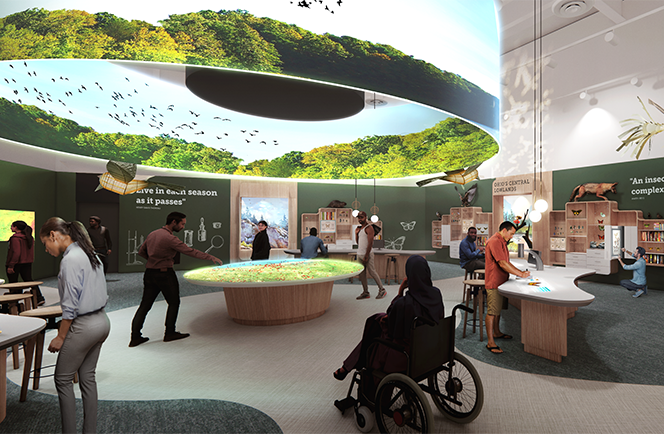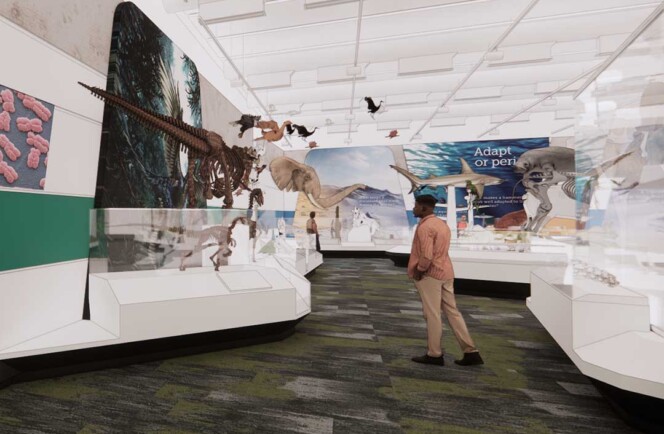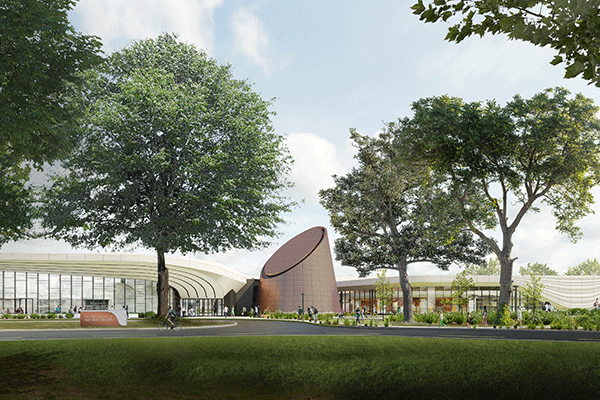Exploring Our Past, Envisioning Our Future: New Curator Dr. Emma Finestone on the Museum’s Transformation
The Cleveland Museum of Natural History’s transformation includes a new, interdisciplinary strategy for collaboration among research staff. As part of this effort, the Museum recently appointed Dr. Emma Finestone Assistant Curator of Human Origins.
October 26, 2022
In this newly created role, Dr. Finestone will conduct research that advances the Museum’s renowned anthropology program while providing a new model for connecting the human past with our lives today.
Dr. Finestone uses archaeological and paleoanthropological evidence to investigate behavioral innovations, early technology and toolmaking, and the adaptive shifts that enabled our ancestors to spread around the globe. Her work also examines when our ancestors began to influence biodiversity, and how that information helps us understand the impact of humans on biodiversity today.
Dr. Finestone is passionate about sharing knowledge with audiences outside the academic community. We spoke with her to learn more about her passion for educating the public, and why she is particularly energized about the Museum’s future.
What should we know about your new role?
Our curators conduct research, but we also share insights into our research with Museum visitors in our Current Science gallery and through Museum programming. As part of my role, I participate in different outreach events and programs that showcase my department’s work. As we redesign the entire Museum, we are also giving input on exhibits and educational programs.
What can you tell us about your research?
A big component of my research involves work in southwestern Kenya, where I do surveys and excavations to look for some of the earliest stone tools used by human ancestors. We also study the environments that these toolmakers were living in and what sort of animals or foods they were accessing with tool technology.
This research helps us understand how our lineage became dependent on tool technology to solve adaptive problems far beyond the scope of any other known species. My work is focused on the origins of those tool behaviors.
Why did you want to join the Museum?
Historically, the Cleveland Museum of Natural History has a really strong program in human origins, and it’s internationally known for its research in biological anthropology. I was drawn to a job in a museum setting because unlike in a collegiate setting, you get to communicate your research with the general public, instead of to a small cross section of the population.
Joining a museum with such a strong legacy of human-origins research in itself makes this an amazing opportunity. The fact that the Museum is undergoing this transformation and reimagining how people are presented with information about the natural world makes it even more exciting.
What part of the transformation project are you most excited about?
Having the Museum as a vehicle for transmitting our scientific research to the public gives me a place to share what I know about the origins of tool technology in human lineages. What’s also exciting is that I can share my research alongside my colleagues to offer a broader window into the subject matter.
Whereas I study the earliest tools used, Dr. Elizabeth Sawchuk researches more recent times, and Dr. Nicole Burt looks at modern human health. We can trace these themes and reveal how technology and human behavior morph over time.
I’m also thrilled about Current Science, where we can exhibit our research and interact with the public throughout the day. With the transformation project, we’re going to keep finding ways to bring research into the public’s view.
Why do you think it’s important to take that approach now?
The Museum is here to inspire the next generation of scientists and everyone interested in learning about natural history and science. We can do that more effectively when we involve people in the scientific process. It makes science more accessible and transparent. It helps people understand the outcomes of our research and the process that leads to scientific conclusions.
Now more than ever, we need people to understand science and the value of research to address challenges humanity faces—today and in the future.

An Opportunity to Democratize Science: New Curator Dr. Elizabeth Sawchuk on the Museum’s Transformation
As we reimagine the Cleveland Museum of Natural History, we are building an interdisciplinary team of scientists whose research will be fully integrated with our new exhibits and educational programs. Dr. Elizabeth "Ebeth" Sawchuk recently joined this team as the Museum’s Assistant Curator of Human Evolution.

Experience Preview: The Evolving Life Wing
Exploring the Connections Among All Living Things

Support from the Jones Day Foundation
The Museum recently received a $300,000 grant from the Jones Day Foundation in support of the Transforming the World of Discovery campaign. The grant will help to fund the complete reimagining of our campus and all our exhibits.
